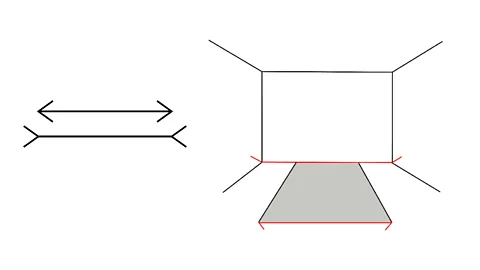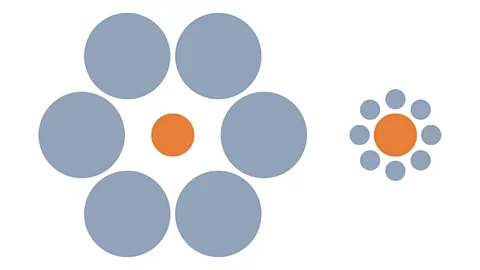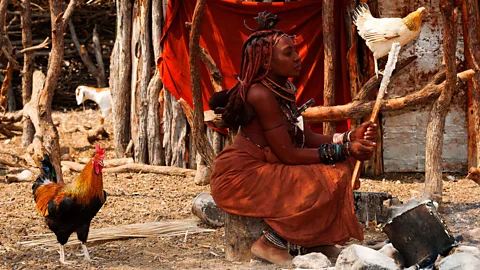The astonishing vision and focus of Namibia’s nomads
 Alamy
AlamyThe Himba people of Namibia can see fine details and ignore distraction much better than most other human beings – a finding that may reflect the many ways that modern life is changing our minds and abilities.
BBC Future has brought you in-depth and rigorous stories to help you navigate the current pandemic, but we know that’s not all you want to read. So now we’re dedicating a series to help you escape. We’ll be revisiting our most popular features from the last three years in our Lockdown Longreads.
You’ll find everything from the story about the world’s greatest space mission to the truth about whether our cats really love us, the epic hunt to bring illegal fishermen to justice and the small team which brings long-buried World War Two tanks back to life. What you won’t find is any reference to, well, you-know-what. Enjoy.
Nestled in a grassy valley of north-western Namibia, Opuwo may seem like a crumbling relic of colonial history. With a population of just 12,000, the town is so small that it would take less than a minute to drive from the road sign on one side of town to the shanty villages on other. Along the way, you would see a hotchpotch collection of administrative offices, a couple of schools, a hospital and a handful of supermarkets and petrol stations.
For many of the people living in the surrounding valley, however, this small town is also the first taste of modern life. The capital of the Kunene region, Opuwo lies in the heartland of the Himba people, a semi-nomadic people who spend their days herding cattle. Long after many of the world’s other indigenous populations had begun to migrate to cities, the Himba had mostly avoided contact with modern culture, quietly continuing their traditional life. But that is slowly changing, with younger generations feeling the draw of Opuwo, where they will encounter cars, brick buildings, and writing for the first time.
How does the human mind cope with all those novelties and new sensations? By studying people like the Himba, at the start of their journey into modernity, scientists are now hoping to understand the ways that modern life may have altered all of our minds. The results so far are fascinating, documenting a striking change in our visual focus and attention. The Himba people, it seems, don’t see the world like the rest of us.
 Alamy
AlamyThe first hints that modernisation could change our vision came from the Victorian anthropologist WHR Rivers, who explored the islands of the Torres Strait, between Australia and Papua New Guinea at the turn of the 20th Century. As he met the locals, he offered them various sensory tests, including the following phenomenon, known as the Muller-Lyer illusion. Take a look at the two lines below left, and try it for yourself:
 Wikimedia Commons
Wikimedia CommonsIn reality, the lines are exactly the same, but if you ask people to estimate their size, most Westerners claim that the second line (with the 'feathers' pointing outwards) is around 20% longer than the top line. During his expedition to the Torres Strait, however, Rivers found that the locals were far more accurate – they just didn’t seem to be as susceptible to the illusion. The anthropologist later repeated the experiment on the Toda people of southern India, finding exactly the same effect, and the same result has since been found in many other pre-modern societies, including the San people of the Kalahari Desert.
It’s a profound finding, showing that even the most basic aspects of our perception – which you may assume to be hardwired in the brain – are shaped by our culture and surroundings. One theory is that the illusion results from the fact that modern humans spend more time indoors, with lots of “carpentered corners”. If the angles along the edge of an object are out, an object is usually further away from us, like the distant wall of a room, whereas if the angles point inwards, it is usually closer to us, like the near side of a table (see above). The brain has learnt to process this perspective rapidly, helping us to estimate size at distance, but in the case of the illusion, that brain processing backfires. Like an irregular lens, our modern, urban brains distort the images hitting our retina, magnifying some parts of the scene and shrinking others.
 Alamy
AlamySuch studies, comparing different cultures, had been few and far between, however. As I have previously explored in another article for BBC Future’s The Human Planet series, most psychological studies have tended to use Weird (Western, Educated, Industrialised, Rich, Democratic) participants, using experiments on American undergraduate students to represent the whole of humanity. But Jules Davidoff at Goldsmith’s University in London, UK, has bucked this trend, and his studies of the Himba offer some striking evidence that many more factors, beyond our “carpentered corners”, may be influencing our perception.
In many ways, the Himba are the absolute counterpoint to our modern, urban lifestyles. The herders live in small groups of wooden huts surrounding a sacred fire – thought to be the spiritual link to their ancestors – and a day’s work revolves around the rearing of cattle, sheep and goats, which they keep in an enclosure known as the “kraal”. The villages are semi-nomadic, and will move with the seasons to find new pastures for the livestock. To many Westerners, the Himba are most famous for their striking appearance, thanks to the rich red ochre that they spread over their skin and hair.
Davidoff’s team were scrupulously sensitive to the Himba’s way of life. They had to gain the permission of the village chief for each experiment, and typically performed the experiments outside the kraal; he says he was only once invited inside. “The hut was really like this Stone Age thing – it was truly remarkable,” he says. “There were no Western artefacts in their society,” he says. Despite these basic circumstances, they are general healthy and well-fed. “They really don’t seem to want for very much – it’s a nice life in many ways.”
Welcome to The Human Planet
This article is the fourth part of The Human Planet, a new series in which BBC Future uses cutting-edge science to explore humanity's extraordinary diversity. If you enjoyed this, you may also like:
Initially, Davidoff had been concerned about the ways these people would react to the laptops and electronic equipment that were crucial to some parts of his research; one colleague told him that the Himba would even be unfamiliar with pen or paper, let alone a computer. But he needn’t have worried; they seemed to adapt to the technology with no qualms at all. And so, with the chief’s permission and with the help of a translator, he has gently probed the ways they see the world.
Many of his first experiments centred on the Ebbinghaus Illusion:
 Wikimedia Commons
Wikimedia CommonsWesterners tend to see the central circle in the first picture as being smaller than the central circle in the second – when they are actually the same size. And just as Rivers had seen with the Muller-Lyer illusion, Davidoff’s team found that the traditional Himba were far less susceptible than those of us living in modern societies.
The phenomenon seemed to reflect a basic bias towards “local processing” – they were more focused on the smaller details (the central circles) while ignoring the context (the surrounding ring) that warps your perception. To test this phenomenon further, he asked them to compare abstract figures made up of smaller figures – such as a square made of crosses, or a cross made of squares. (You can see examples here.) When judging the similarity of these pictures, the Himba were more likely to base their judgements on the smaller elements, rather than the overall shape – again suggesting a ‘local’ bias on fine details.
More strikingly still, later experiments showed this enhanced focus also seemed to be reflected in their ability to hold their attention and ignore distraction: when they were asked to quickly search for shapes in a grid, for instance, they were less easily distracted by the movements of other objects on the screen. In fact, they appeared to be the most focused of any groups previously studied.
Davidoff emphasises that the traditional Himba are flexible: they can easily see the “big picture” when encouraged to do so. Even so, their strong preference for focusing on the local details is puzzling.
One explanation for their astonishing focus may come from the cattle rearing itself. Identifying each cow’s markings was apparently essential for their daily life – and this practice may perhaps train the eye with a focus and attention that was lacking in all modern societies. “I think that does come from their traditional lives – the powers to concentrate,” says Davidoff.
 Alamy
AlamyBut it could also be that modern life itself makes us more easily distracted by our surroundings. And it is for this reason that Opuwo is so interesting, as younger generations slowly migrate to the shanty villages on the edge of the small town. As the anthropologist David P Crandall put it in his book The Place of Stunted Ironwood Trees: “The fascination and attraction of city lights, even the dimmed and often fractured ones of Opuwo, proffer an allure and mystique, a cosmopolitan novelty to be found nowhere else in their world.” It is, he says, “the vanguard of change for the entire region… a crossroads of several worlds.”
To discover how this move might influence the Himba’s psychology, Davidoff’s team compared Himba migrants to the small town, with those still living the traditional lifestyle. As they had expected, the Himba who had spent years living on Opuwo were less focused on the local details (making them more susceptible to the Ebbinghaus illusion, for instance) than those living in the countryside. But you didn’t need to have spent your whole life in the town for it to have an effect; the team found that even very short day trips to Opuwo seemed to have had a lasting impact their perception, making them less focused on differences in the local details (and more conscious of the overall shape) when comparing two abstract figures, for instance. Needless to say, the influence was much greater for those who lived in the town – but it was still present even for the Himba who had only visited a couple of times. “There does seem to be a ‘dose effect’ – the more of it you have, the greater the effect becomes,” says Davidoff.
As Davidoff points out, urban environments are naturally more cluttered than the Kunene valley, with more objects vying for our attention. Just think about crossing the road, as your eyes dart from the traffic lights to the oncoming cars and the fellow pedestrians making their way towards you. Our attention needs to be more diffuse.
Then there’s the stress of urban life, compared to the relative tranquillity of life in the kraal. As Crandall described in The Place of Stunted Ironwood Trees: “Though a stranger might at first hear only silence, the beat of a distant drum, the bicker of chatting voices, the grinding stones, the bleating and lowing of livestock, the rushing of wind, the chirping of birds, the clicking of insects, the stamping of feet, and the clapping of hands form a constant and familiar stream of sounds.” The hustle and bustle of a town, in contrast, may put you on high-alert, and this stress primes your visual system to cast its net wider, as it is on the lookout for threat.
 Alamy
AlamyThese are just hypotheses, however – and it is interesting to put it in the context of other research exploring non-Western cultures. The psychologist Richard Nisbett at the University of Michigan, for instance, has strong evidence that our vision can be influenced by our social lives: people who live in more interdependent, collectivist societies like Japan and China tend to focus more on the context of a social situation – and they also tend to pay more attention to the backgrounds of pictures; they are more ‘holistic’ and less ‘analytical’.
“If you are paying attention to the social world, you incidentally pay attention to the physical world too, so you end up noticing things that wouldn’t be noticed by someone with an analytical mindset,” says Nisbett. (For more information, see our in-depth article: How East and West think in profoundly different ways.)
The Himba appear to live in a tight-knit community, rich in traditions that bind the whole group – so they would seem to be an exception to this rule. But Nisbett has also shown that people’s professions make a difference, even within the same culture: shepherds in Turkey tended to be less holistic than farmers or fishermen, for instance, perhaps because it brings a greater focus on the individual and less cooperation between group members. A closer examination of the Himba’s working and social lives, compared to other indigenous peoples, will help pick apart the various factors that shape their view of the world.
Davidoff also points out that we should beware reports exaggerating the perceptual differences in indigenous populations. He has seen some articles arguing that pre-modern people are puzzled by photographs, for instance – failing to comprehend the flat, 2D images of the world around them. In fact, the Himba were quite the opposite: they would often ask him and his team to bring back photos on their return trips. “They recognised other people in the group very quickly,” he says. “I’m certain there was no concern about photographic reality.” The love of a good selfie, it seems, can cross all cultural boundaries.
--
David Robson is BBC Future’s feature writer. He is @d_a_robson on twitter.
If you liked this story, sign up for the weekly bbc.com features newsletter, called “If You Only Read 6 Things This Week”. A handpicked selection of stories from BBC Future, Earth, Culture, Capital, and Travel, delivered to your inbox every Friday.
